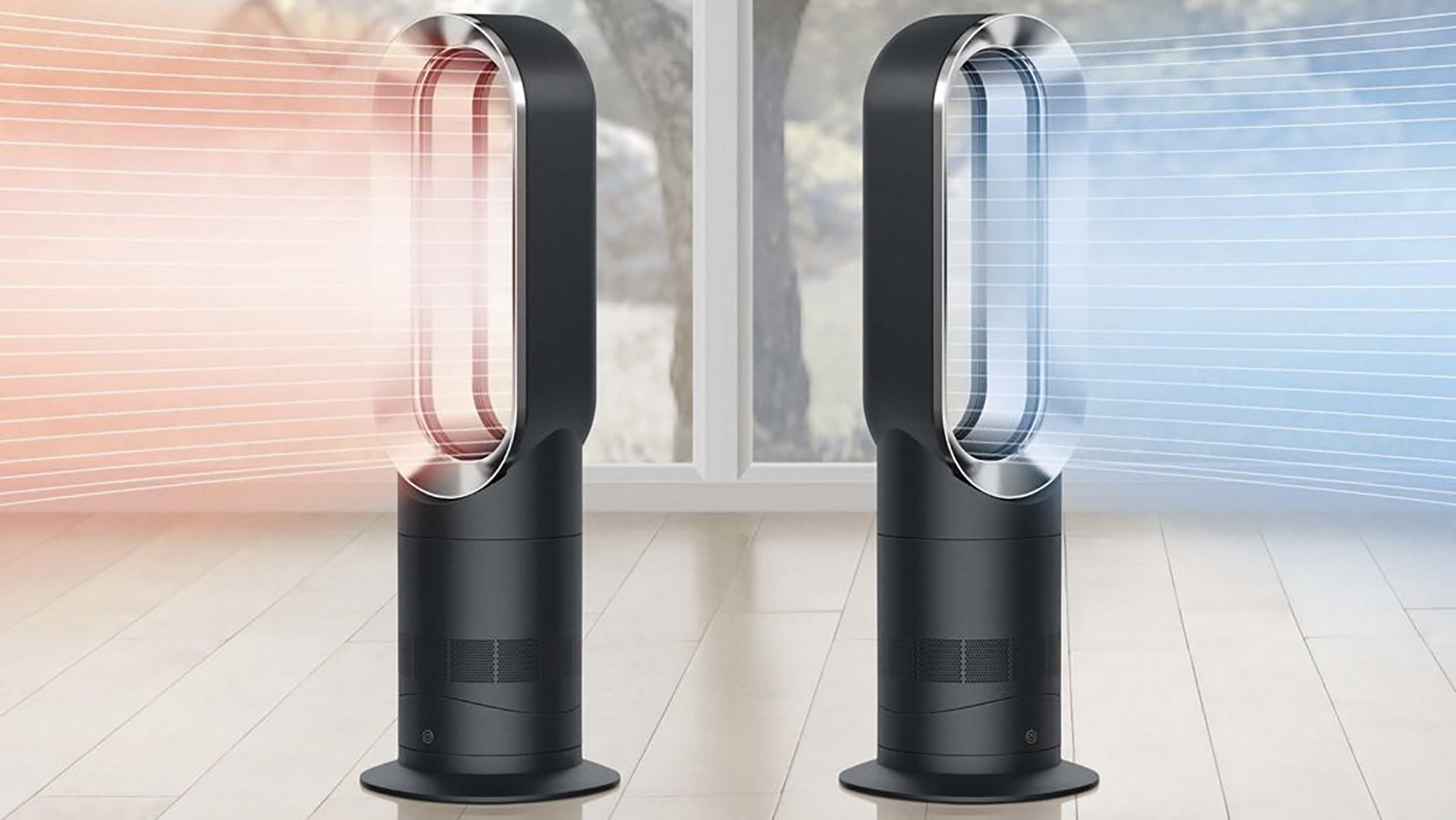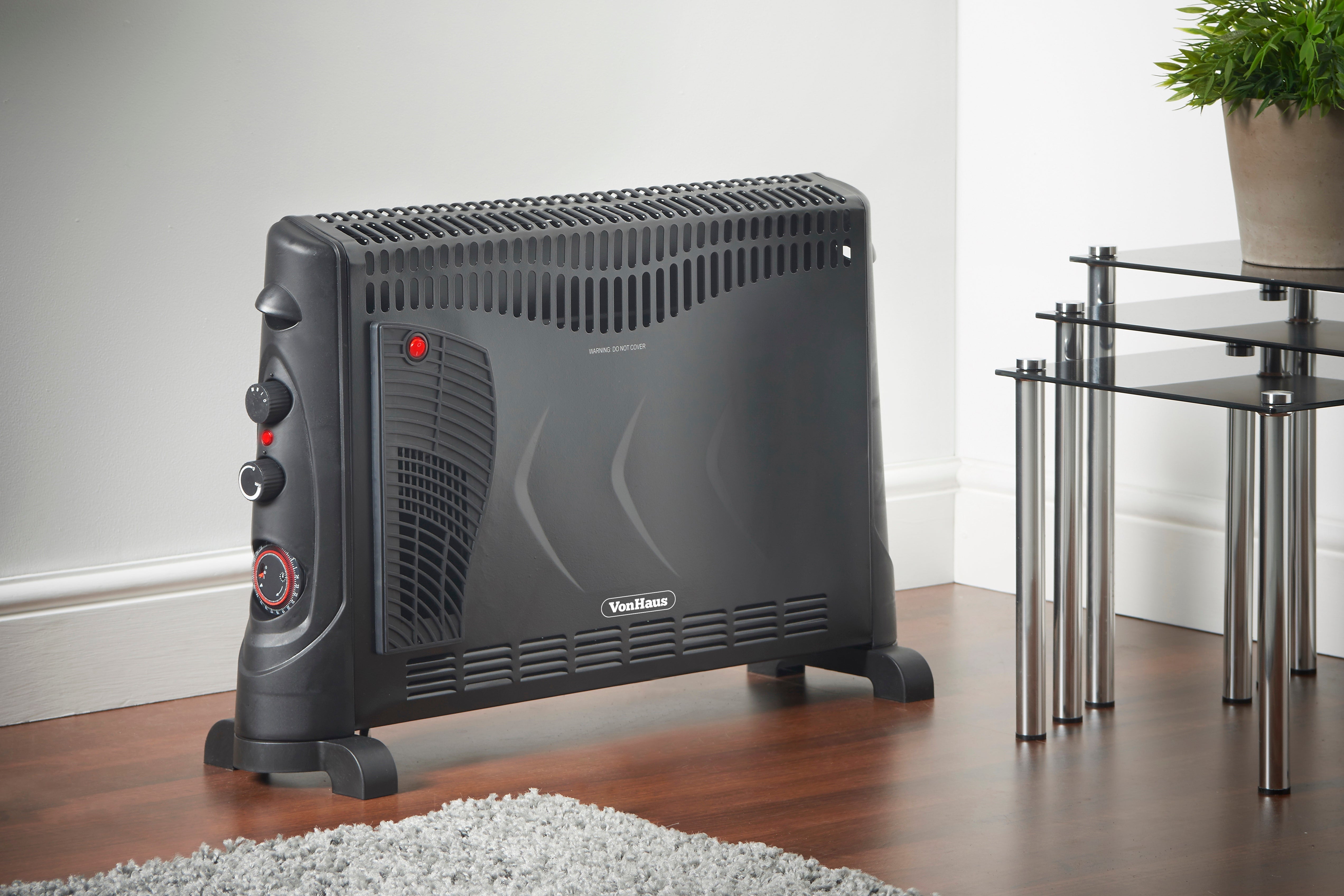Duux Threesixty 2 Review
A well-priced fan heater with smart control options
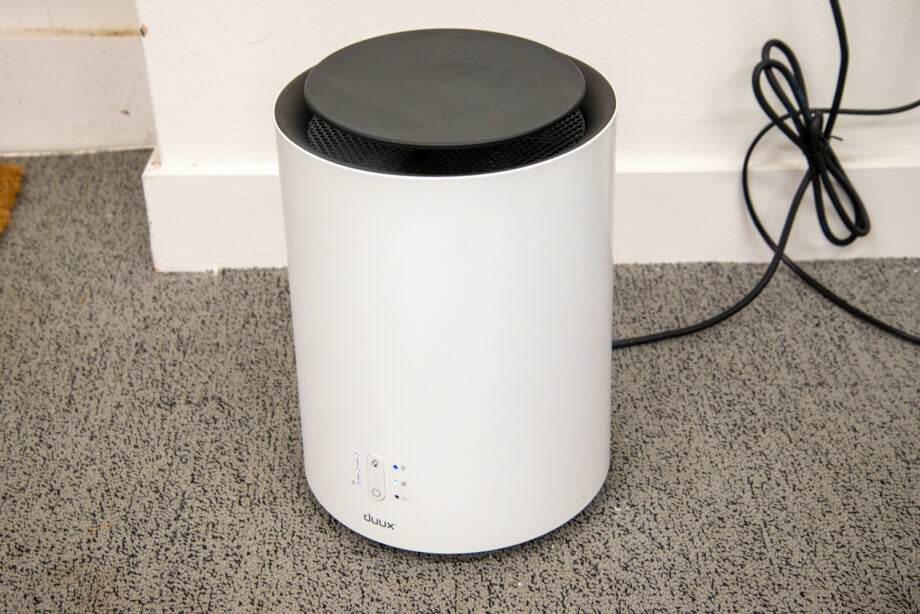
Verdict
With a relatively low price for a smart fan heater, the Duux Threesixty 2 looks great and is accompanied by a neat app. I found its temperature sensor quite reliant on where the fan is placed, but you can only set a target temperature from the app, which is a little restrictive.
Pros
- Compact
- Neat app
- Well priced
Cons
- Can’t set temperature on fan body
- Thermometer readings vary on fan position
Availability
- UKRRP: £99.99
- EuropeRRP: €99.99
Key Features
- HeatThis fan heater uses a PTC element, directing hot air out at 360 degrees through the top
- Smart featuresConnected to the app, the Threesixty 2 can be controlled via Amazon Alexa and Google Assistant
Introduction
Duux has impressed us in the past with its range of smart products, bringing app and voice control to a range of environmental products. Now, the company introduces the Duux Threesixty 2, a small smart heater that cleverly pushes out hot air all around it.
A neat design and helpful app work in its favour, but there’s too much reliance on app control, where on-device options would have been better.
Design
- Small and squat
- Looks neat
Available in white or grey, the Duux Threesixty 2’s cylindrical body looks great and evokes memories of the round Apple Mac Pro computer. It’s a neat design, and since the heater is quite small (295 x 215 x 215), you won’t need much room to place it.
This fan heater blows hot air out of the top, designed to push out air through 360 degrees. As such, you don’t have to angle or point this heater in a specific direction to get the most out of it.
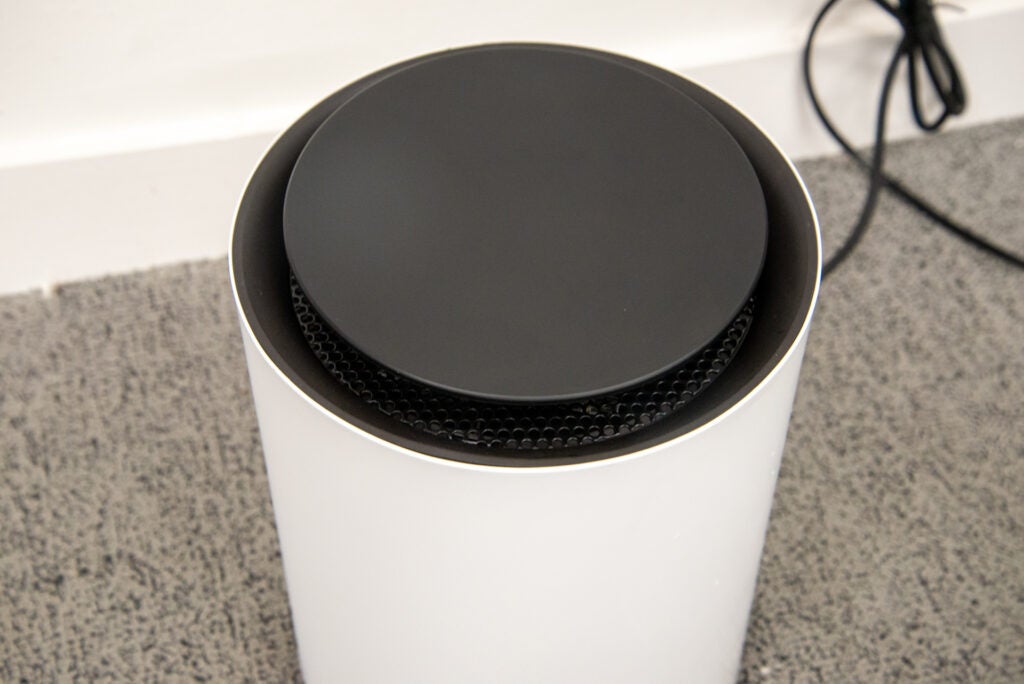
There are few controls on the front: just a power button, plus a button to toggle through the three heat levels, with the selected option highlighted by an LED.
Features
- Not all features are available on the body
- Amazon Alexa and Google Assistant control
To get the most out of the Duux Threesixty 2, you need to hook it up to the smartphone app and connect the heater to your Wi-Fi network. This is pretty straightforward – and, in a way, necessary.
Open up the app and you’re presented with the same basic controls you see on the fan’s body, letting you toggle power and choose between the three heat modes. However, the app offers a major advantage: you can also set a target temperature.
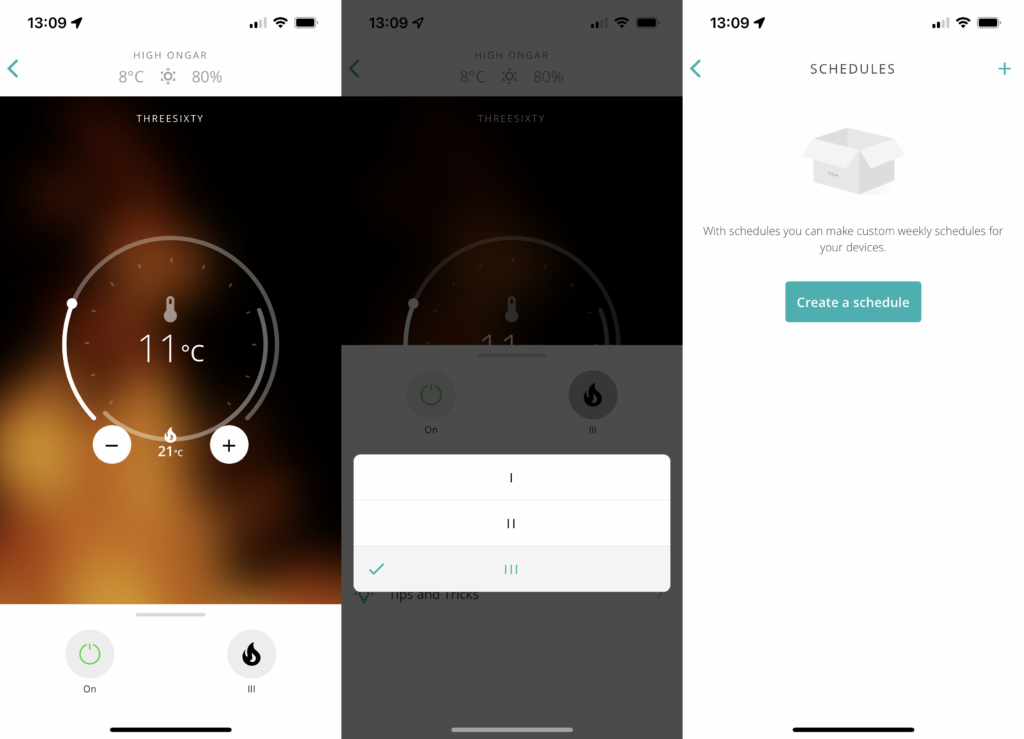
If you don’t want to use the Duux app, the heater is compatible with the Smart Life system. This delivers the same level of control, but it means that you can control smart devices from different manufacturers all in one place. For example, the TCP Smart WiFi Plug is also compatible with Smart Life.
Using the built-in thermostat, the fan will turn off automatically when it reaches the set temperature. That’s welcome, but the fact the option is available only through the app is a little frustrating.
It also means that if you get a bit cold and reach for the controls on the fan, you may find that the Threesixty 2 won’t blow out any heat as the set temperature has been reached. All of which means you’ll be reaching for the app pretty consistently.
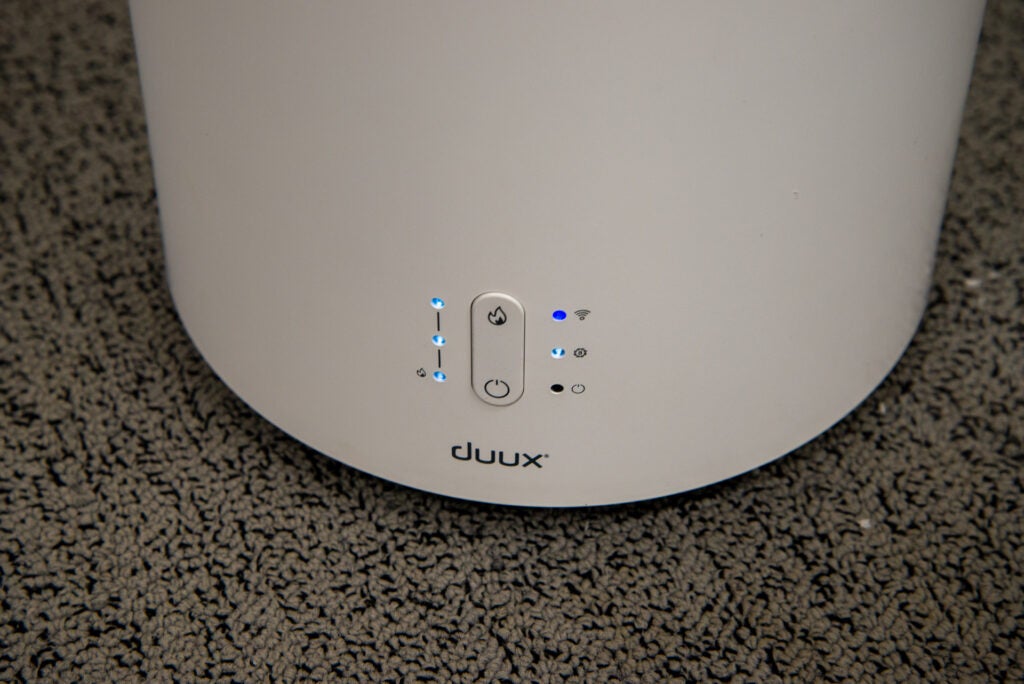
As well as basic control, you can create schedules through the app, too, allowing you to control when the heater is run. It’s a little like having a smart thermostat.
Amazon Alexa and Google Assistant skills are available, enabling you to toggle the device on and off, or set a target temperature.
For safety, the Duux Threesixty 2 has overheat protection, shutting down if the heating element becomes too hot. It has tip-over protection, too, cutting power if the fan is tilted too far.
Performance
- Good heat output
- Temperature sensor not that sensitive
I used the Duux Threesixty 2 in my test lab (around 30m2), which is about the limit of this small heater. Measuring the maximum output from 15cm, I found that this model had an air flow of 0.71m/s and an air temperature of 48.9m/s.
That’s not a lot of air, so unless I was sitting quite close to the fan heater, I wasn’t able to feel a blast of warm air, as I do when using the Dyson Purifier Hot + Cool Formaldehyde. This isn’t necessarily a problem, since the Duux fan heater does have an impact on temperature.
Firing it up on maximum speed, I registered a 3ºC increase in 20 minutes, jumping from a chilly 12ºC to 15ºC. However, I found that with the fan on the floor, it didn’t move past 16ºC, even though the ambient room temperature was higher than this – as verified by other thermometers.
Placing the Duux Threesixty 2 on a desk improved matters. Here, it read higher temperatures, turning off the fan when it hit the set point of 18ºC. Based on my readings, it suggests that the Duux Threesixty 2 is quite sensitive to placement, at least if you want it to switch off at a set temperature.
With the Duux Threesixty 2, the three heat modes adjust the power output: 840W on the I setting, 1200W on the II setting, and 1800W on the III setting. Having these options means that you can reduce the heat output when you don’t need as much – say, in a relatively warm room that needs the edge taking off it. And, reducing the power mode in turn reduces running costs.
At average electricity prices (18.9p per kWh), this fan heater will cost between 15.88p per hour and 35.91p per hour to run. That’s par for the course for a fan heater, but the cheaper option at least means that you can use this fan heater flexibly.
For noise, on the lowest setting, I measured the Duux Threesixty 2 at 48.9dB. This is relatively quiet, ramping up to 56dB on the highest setting. This is largely because the fan speed has to increase on the highest heat setting to prevent damage to the PTC heating element.
Latest deals
Should you buy it?
If you want a compact and smart electric heater, this neat-looking unit is a good choice for smaller rooms or for adding extra comfort to a larger one.
If you’d like greater control from a fan heater, there are models that perform better – and for larger rooms a more powerful fan heater will be desirable.
Final Thoughts
The Duux Threesixty 2 is well priced for a smart heater and it’s nice to have the option to set a temperature target, even if this is only available through the app. It’s a shame that the thermostat’s temperature seems to depend on the fan heater’s location, too.
The slightly cheaper Meaoco MeacoHeat MotionMove Eye 2.0kW is a good alternative if you’re not too concerned about having smart functionality, while the Dyson Purifier Hot+Cool Formaldehyde is a good all-year-round option. Check out other alternatives in my guide to the best electric heaters.
How we test
Unlike other sites, we test every heater we review thoroughly over an extended period of time. We use industry standard tests to compare features properly. We’ll always tell you what we find. We never, ever, accept money to review a product.
Find out more about how we test in our ethics policy.
Used as our main heater for the review period
We measure the fan speed (if available) using an anemometer so that we can accurately compare performance between models
We measure the heat output of the fan and its effect on our test lab.
FAQs
No, this model is only a heater.
The three modes select the heat output, from low to high.
Yes, it does, although you can only set a target temperature through the app.

